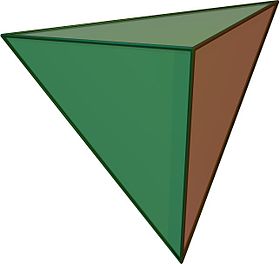A quick check can be made by examining the two wikipedia pages linked here:
wikilink for mass
wikilink for length
Since the mass-length product is a key part of the equation for the proton mass-radius relationship, it may be informative to examine more deeply this product.
$$m_pr_p={2h\over{\pi c}}=4\ell m_{\ell}$$
By inspection, one can see that this equation is a form or a specific case of quantized angular momentum, such as that proposed in the Bohr model.
However, it could also be a solution to a stable vibration in the ether, like a black hole / white hole dual vortex pair.
Now, for investigative purposes, let's look at the math of treating the proton mass as a point mass at the end of a radius[1], going at the speed of light, c, and look at the angular momentum:
Now, for investigative purposes, let's look at the math of treating the proton mass as a point mass at the end of a radius[1], going at the speed of light, c, and look at the angular momentum:
- Using DeBroglie Hypothesis, $p=m\nu={h\over\lambda}$
- Future: examine with other cymatic or platonic hypotheses for $r\over\lambda$ solutions
Start with the equation for angular momentum:
$$L=m\nu r={hr\over\lambda}$$
Using the hypothesis that the proton is condensed light, a stable EM? vibration in the ether, thus $$\nu=c$$
$$L=m\nu r=mcr={hr\over\lambda}$$
$$mr={hr\over c\lambda}$$
Using the Bohr circular waveguide around a central point (integer number of wavelengths in a circumference), $$\lambda={2\pi r\over n}$$
$$mr={nh\over2\pi c}$$
For the $n=4$ case, why $n=4$ ? Tetrahedron is first 3D vibration??? Nonetheless, let $n=4$ because looking ahead, it is $n=4$ that is the stable proton "solution" to this energetic disturbance in the vacuum dynamics we call proton.
$$mr={2h\over\pi c}=4\ell m_{\ell}$$
Which is the proton mass-radius relationship. Note we are not saying that the proton is a little positively charge ball spinning at a radius r around a central point - this is just a way to keep track of part of the information of the proton, i.e., quantifying an aspect of an energetic disturbance in the aether, the math of which we'll have to look into later.
A star-tetrahedron, if free to rotate around a central point, draws out a sphere
and it is this energetic stably trapped photonic (EM) energy that is the proton:
A complete picture would include the surrounding disturbances in the aether, since nothing is isolated, but entangled.
Next, we'll look at how these ideas can be extended to replacing the strong force with quantum gravity, as Haramein did in: Quantum Gravity and the Holographic Mass and check to see if it makes any sense to go in this direction.
[1] This is a way of making an attempt to summarize or model the information of a proton since the 3D/4D (up to 8D???) superfluid or super-plasma dynamics equations are out of the scope of this presentation.


No comments:
Post a Comment
Watch the water = Lake 👩 🌊🦆